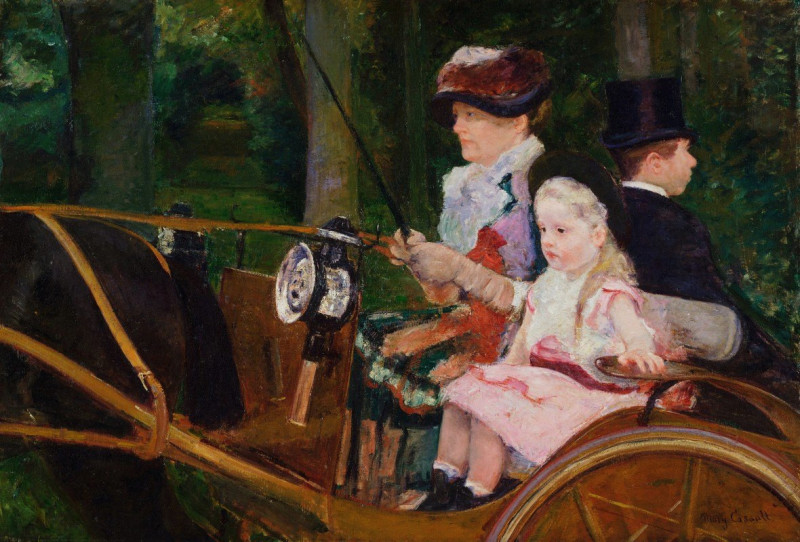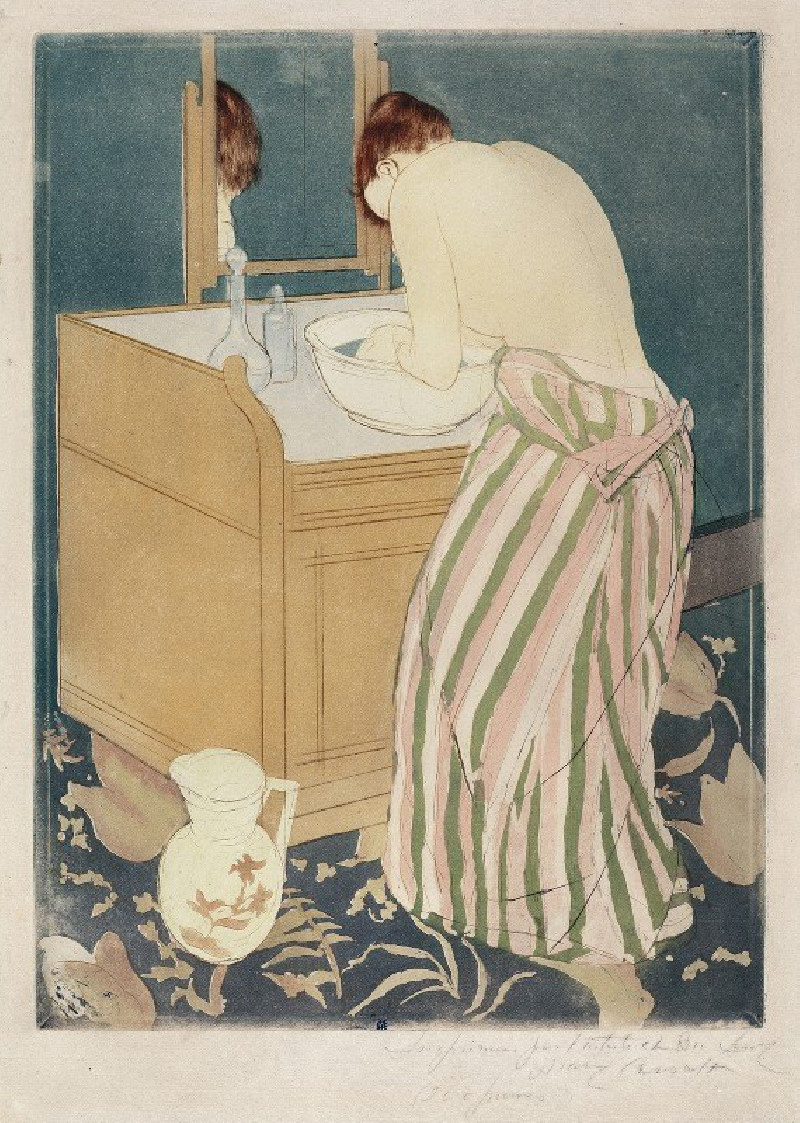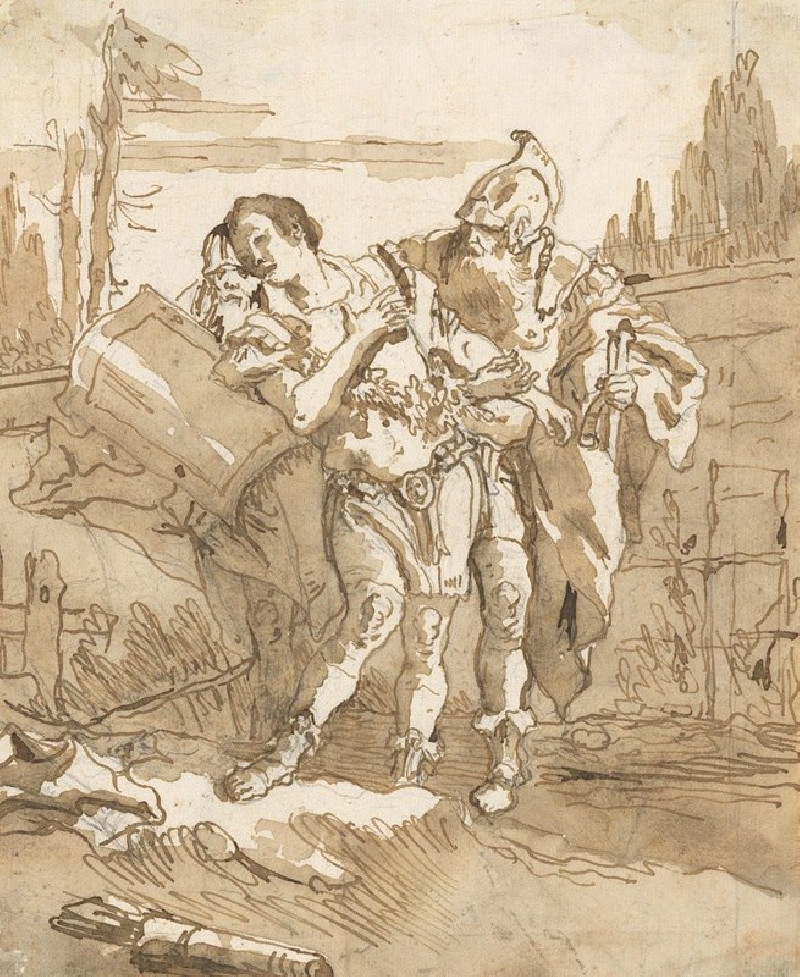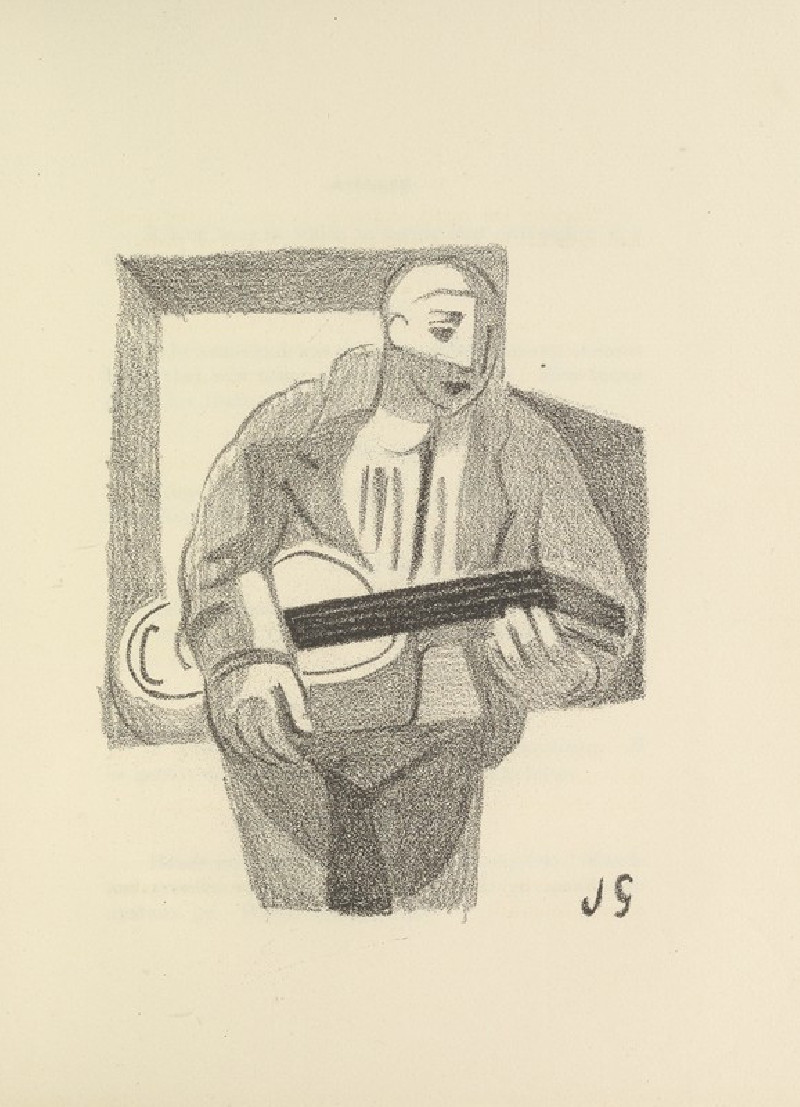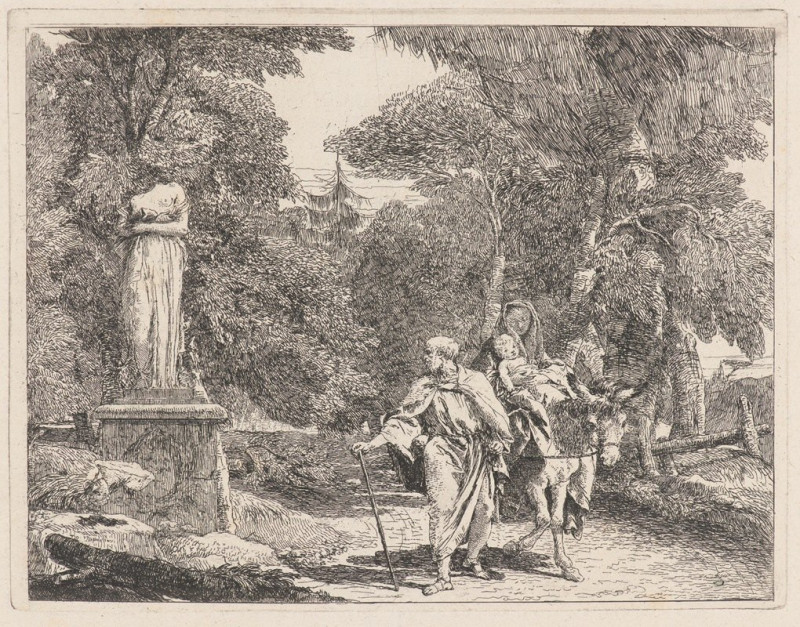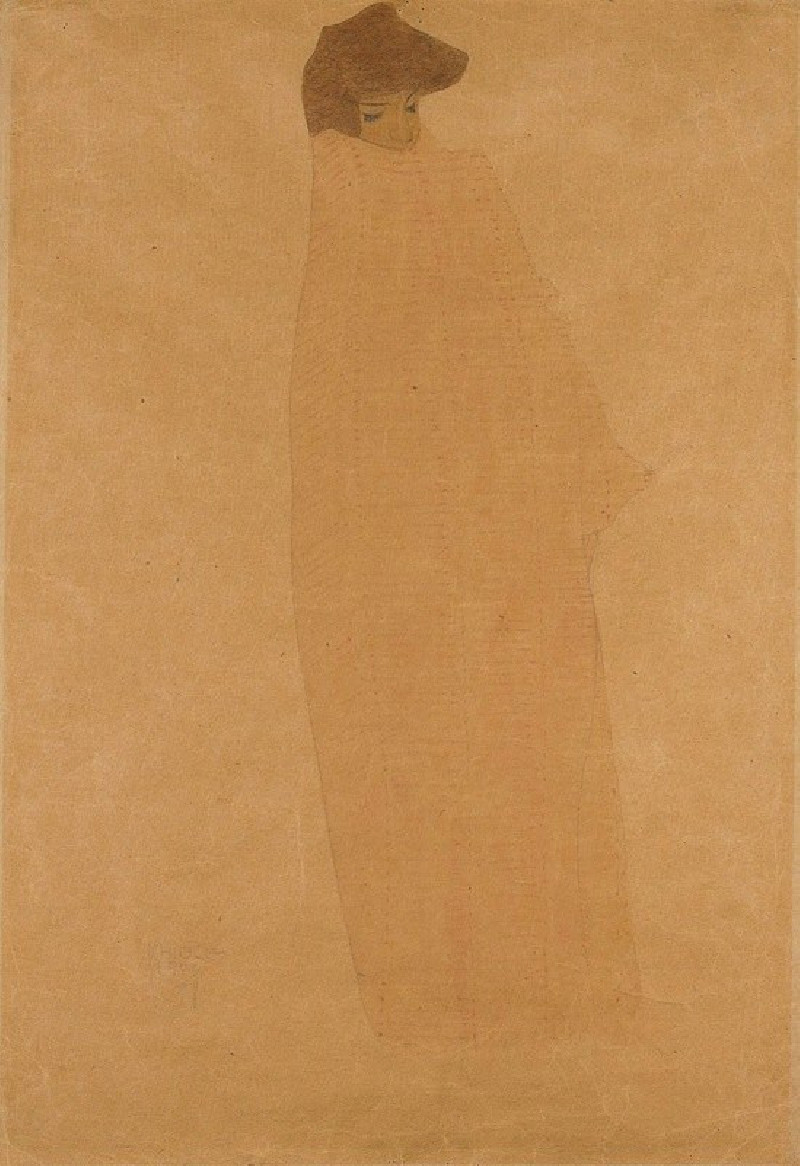The Black Hat (c. 1890)
Technique: Giclée quality print
Recommended by our customers
More about this artwork
"The Black Hat," a compelling pastel work by Mary Cassatt created around 1890, captures the delicate essence of a young woman adorned in a fashionable ensemble characteristic of the period. The painting focuses on the dignified posture and reflective gaze of the subject, whose features are gently illuminated against a neutral background, emphasizing her youthful innocence and the soft, thoughtful expression in her eyes.Cassatt's expertise in portraying the subtleties of human emotion and the nuances of social femininity shines through in this portrait. The wide-brimmed, dark hat elegantly frames the girl's face, drawing attention to her eyes and the light blush on her cheeks. This contrast between the hat's boldness and the subject's serene demeanor subtly alludes to the complexities of identity and social appearance.The choice of a cool, serene blue for her dress not only complements the warmth of her complexion but also enhances the overall tranquility of the composition, making "The Black Hat" not only a study of fashion but also a quiet, introspective piece that invites viewers to ponder the inner thoughts of its subject.
Delivery
Returns
Mary Stevenson Cassatt was an American painter and printmaker. She was born in Allegheny City, Pennsylvania (now part of Pittsburgh’s North Side), but lived much of her adult life in France where she befriended Edgar Degas and exhibited with the Impressionists. Cassatt often created images of the social and private lives of women, with particular emphasis on the intimate bonds between mothers and children.
She was described by Gustave Geffroy as one of "les trois grandes dames" (the three great ladies) of Impressionism alongside Marie Bracquemond and Berthe Morisot.In 1879, Diego Martelli compared her to Degas, as they both sought to depict movement, light, and design in the most modern sense.














